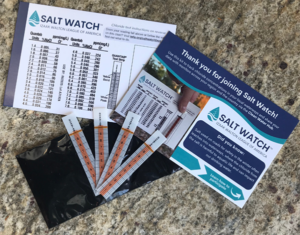In the largest rollback of clean water protections in 50 years, the Supreme Court ruled in 2023 that the Clean Water Act does not protect a majority of the nation’s wetlands and millions of miles of streams. The Court’s decision in Sackett v. Environmental Protection Agency drastically narrows the scope of the Clean Water Act by eliminating protections for wetlands and tributary streams except in extreme, limited circumstances.
The Court’s ruling eliminates safeguards for vital links of our waterways, with no consideration of wetlands’ essential role in filtering and improving water quality, dispersing floodwaters and providing critical habitat for fish and wildlife.
Proven science shows how tributary streams influence downstream waters, and one in three Americans get drinking water from public systems that rely, at least in part, on these small streams. Yet, the Court ignored the plain language of the Clean Water Act that clearly articulates congressional intent to protect these waters.
This ruling defies science, the law and common sense by simply pretending that waters deemed “navigable” cannot be impacted by pollution in their tributaries or adjacent wetlands.
Soon after this decision, the League warned it was only the first blow. Unfortunately, the most recent blow landed in mid-March when the Environmental Protection Agency (EPA) announced an abbreviated public process that effectively asks for input about how to further reduce protection for wetlands and streams.
This review will fail to protect our waterways because the regulations will follow the dangerous misinterpretation of the Clean Water Act and faulty definition of Waters of the USA established by the Supreme Court in Sackett v EPA in 2023. However, the League responded by submitted extensive comments detailing why further cuts to clean water protections are unwarranted. Our message to the EPA? Interpretation of the Clean Water Act must adhere to science as well as the clear intent of this bedrock law, which clearly states: “The objective of this Act is to restore and maintain the chemical, physical and biological integrity of the Nation’s waters.”
 Your kit will include a bottle containing 25 nitrate test strips which you can use to test your water source(s) throughout the year. You’ll also receive postcards explaining how to use your nitrate test strips and how to share your Nitrate Watch results on the Clean Water Hub.
Your kit will include a bottle containing 25 nitrate test strips which you can use to test your water source(s) throughout the year. You’ll also receive postcards explaining how to use your nitrate test strips and how to share your Nitrate Watch results on the Clean Water Hub. Your kit will include four test strips so you can test your waterway throughout the season. You’ll also receive a chart to help you interpret your results and a postcard with instructions for completing a Salt Watch test and reporting your findings.
Your kit will include four test strips so you can test your waterway throughout the season. You’ll also receive a chart to help you interpret your results and a postcard with instructions for completing a Salt Watch test and reporting your findings.